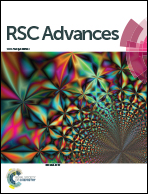Effect of the matrix modification technique (MMT) on the composition, microstructure, morphology, interfacial interaction and mechanical properties of polypropylene reactor alloys
Abstract
In this paper, a new approach was applied to improve phase compatibility of isotactic polypropylene (iPP) reactor alloys through a matrix modification technique (MMT). The matrix phase of a heterophasic block copolymer was prepared using a 4th generation Ziegler–Natta catalyst and was modified by 0.5, 1, 1.5 and 3 wt% ethylene as a co-monomer along with propylene. Evaluation of quantitative FTIR spectroscopy revealed that the ethylene content of the matrix is similar to the amount of injected ethylene in the reactor during the matrix preparation stage. Copolymerization and post homopolymerization conditions for all the samples were similar. It was found that the co-monomer content of the modified matrix strongly affects the cold soluble xylene fraction and also the microstructure of iPP reactor alloys. Morphological studies using scanning electron microscopy confirmed the significant improvement in the morphology of reactor alloys when 1 and 1.5 wt% ethylene were randomly copolymerized with propylene during the matrix preparation stage and almost single-phase morphology was observed when 3 wt% ethylene was added in the matrix. The interfacial interaction between ethylene propylene rubber (EPR) and the matrix was determined by Pal and Palierne emulsion models, and the results revealed an improvement of phase compatibility between the matrix and the dispersed phase when 1.5 wt% ethylene was used in its modified matrix. Thermal analysis showed that by increasing the co-monomer content in the modified matrix, the degree of crystallinity and the melting point (Tm) decrease. Mechanical tests indicated that the effect of the MMT on improving the phase compatibility and toughness of reactor alloys is higher than that of the dispersed phase content.


 Please wait while we load your content...
Please wait while we load your content...